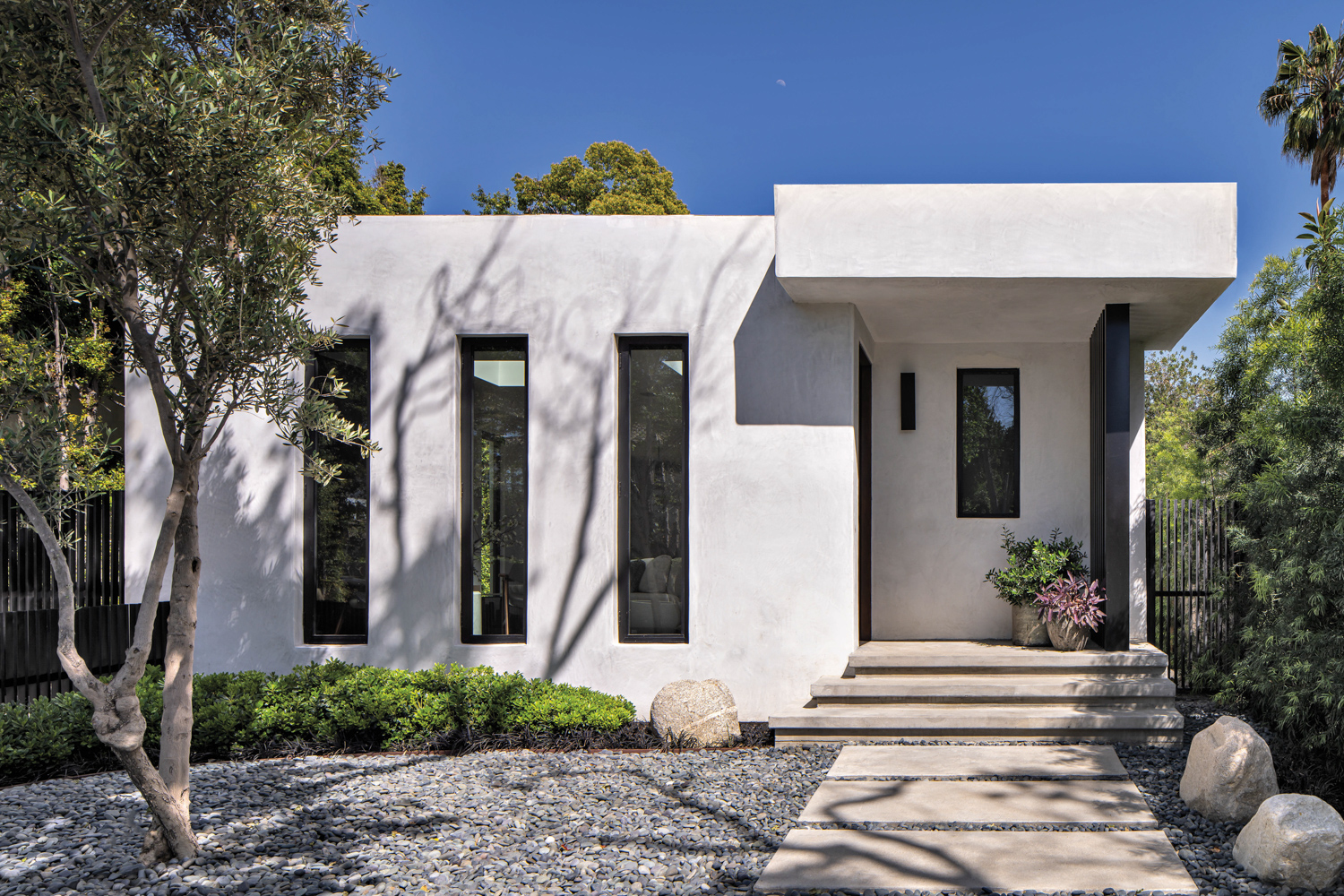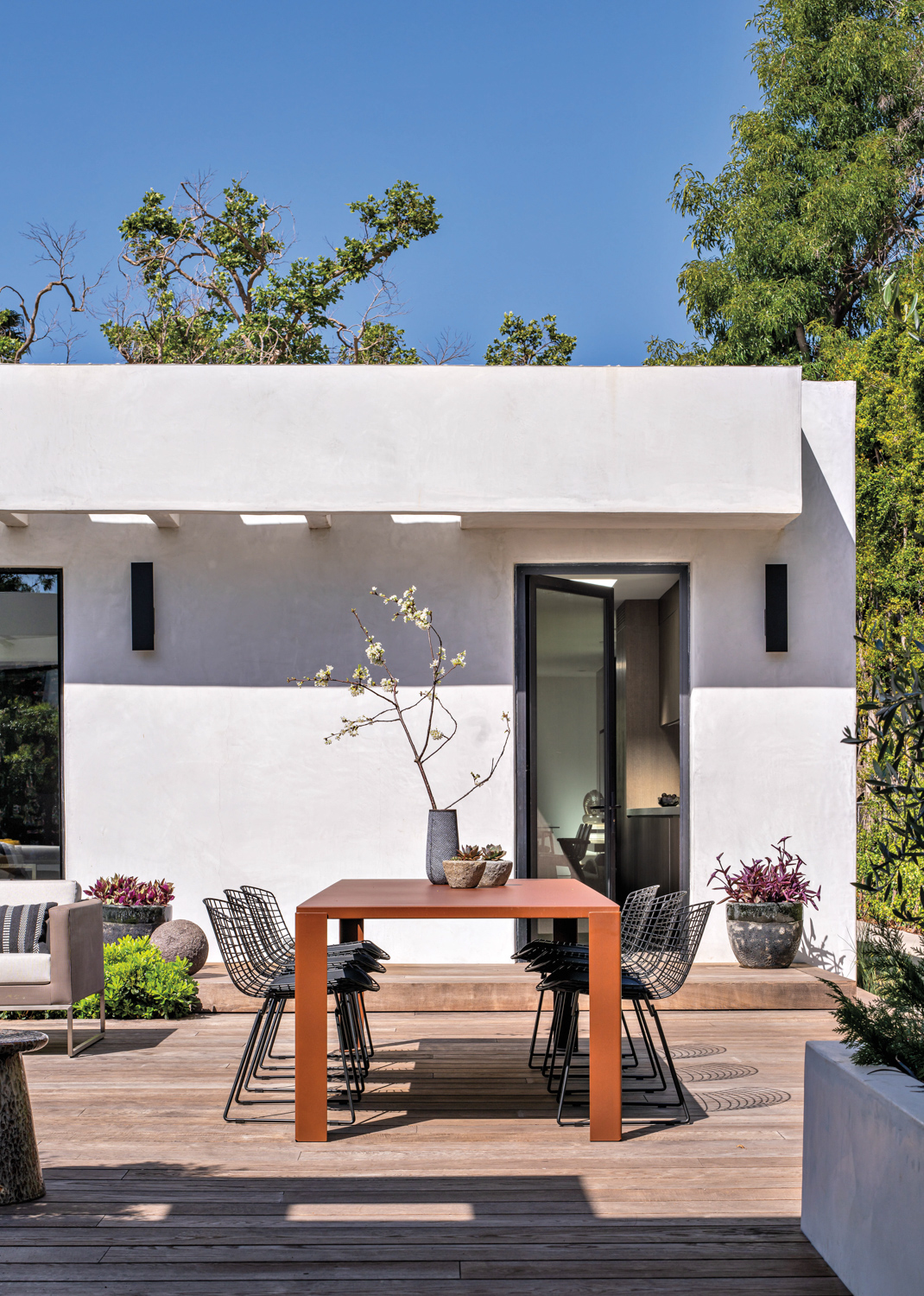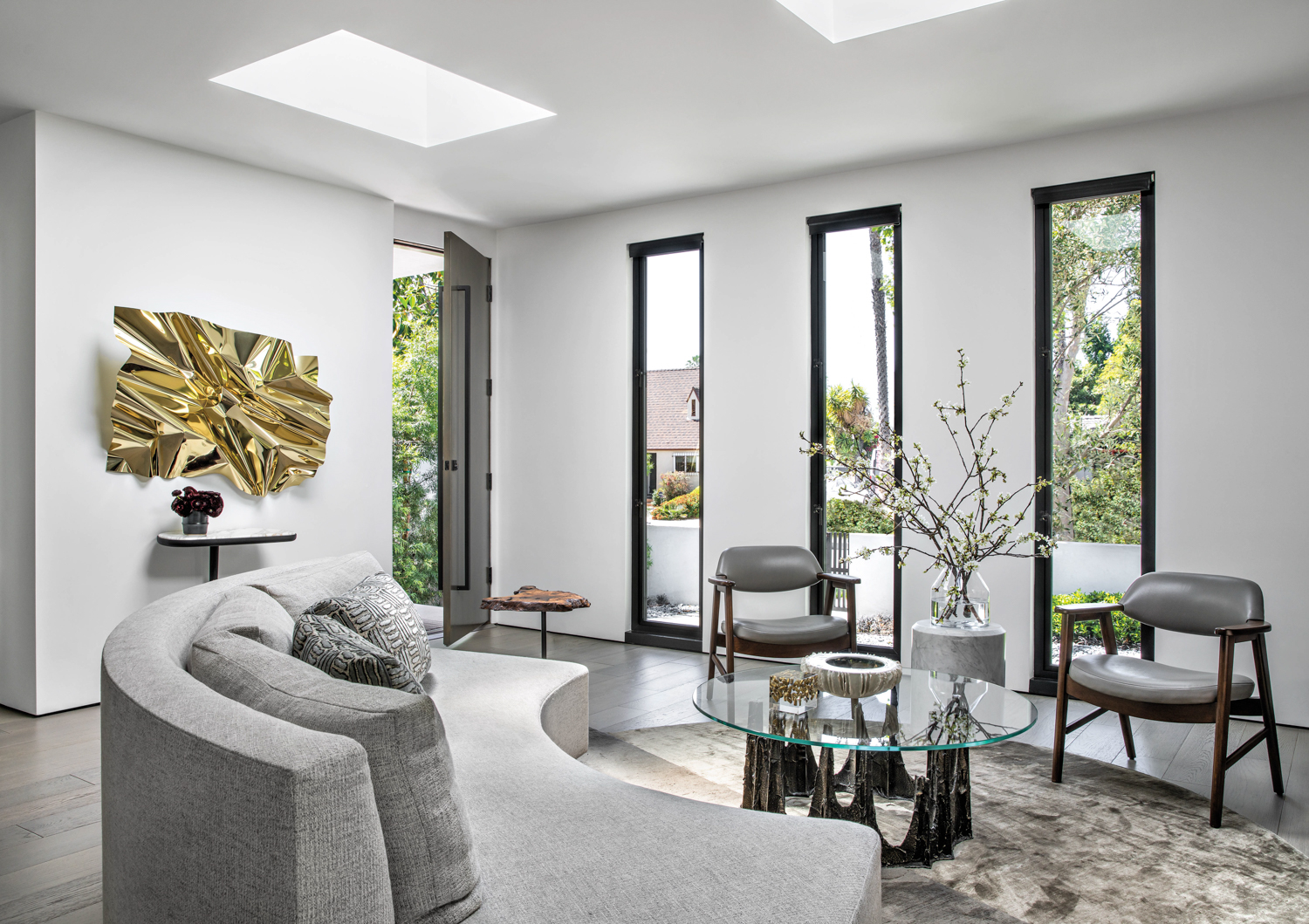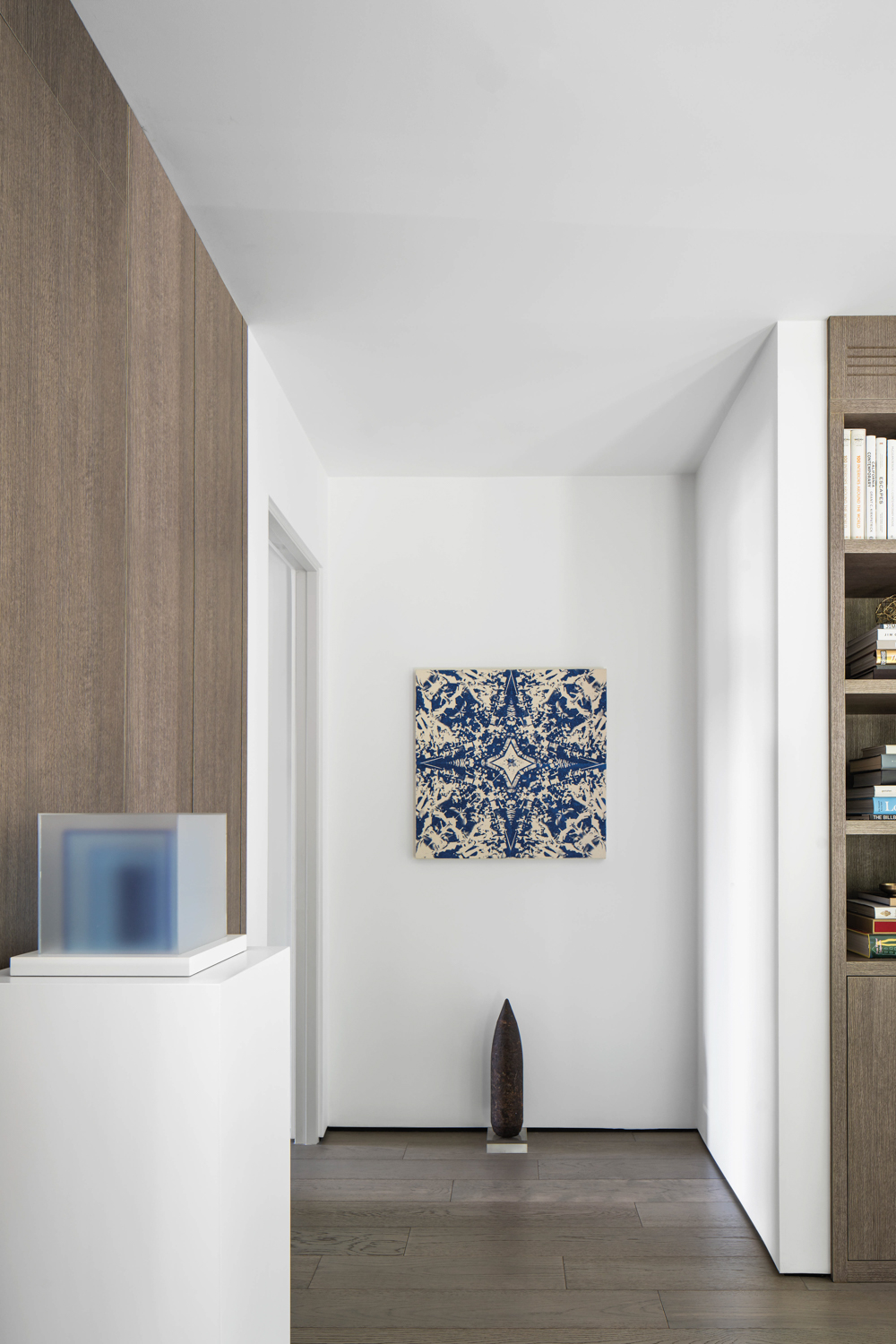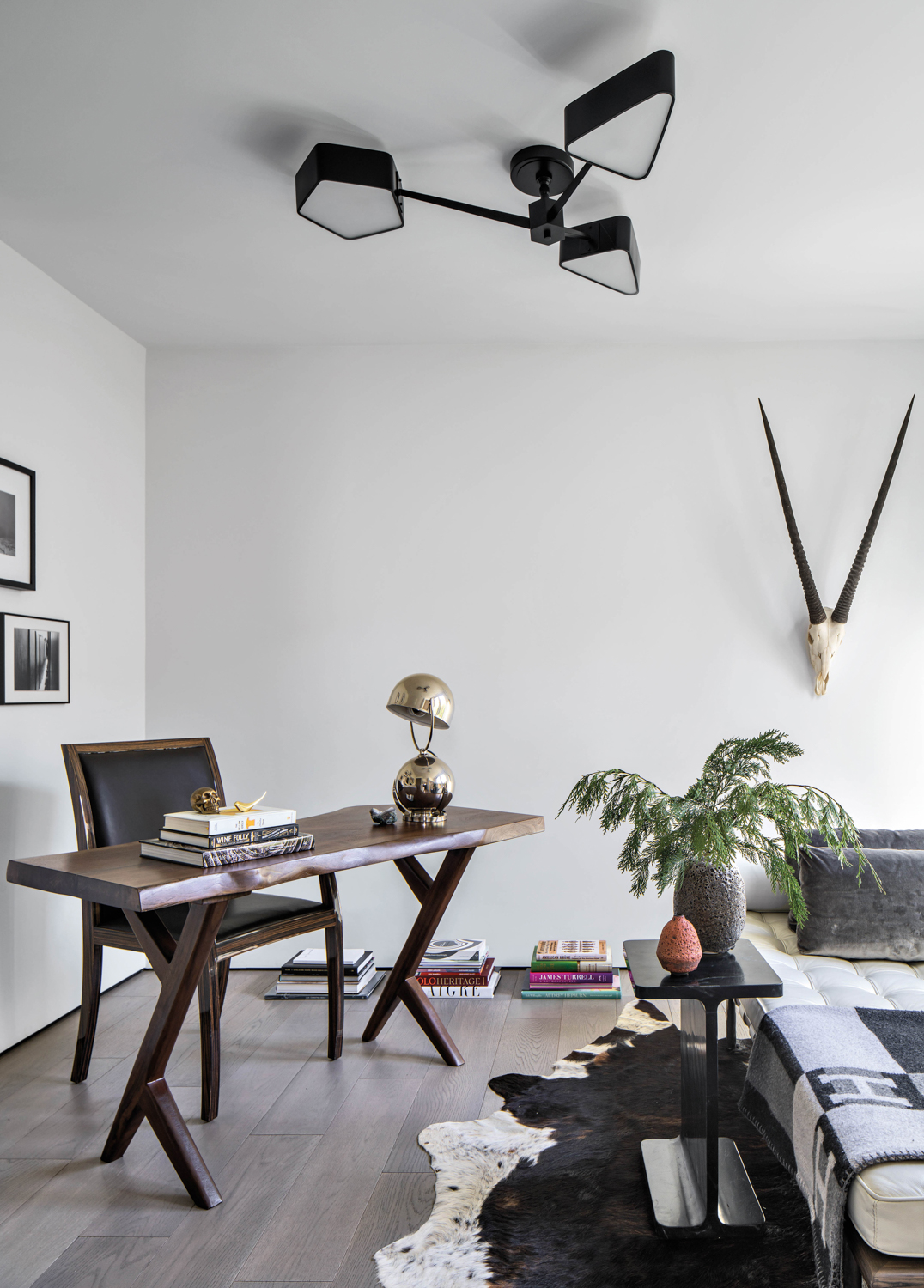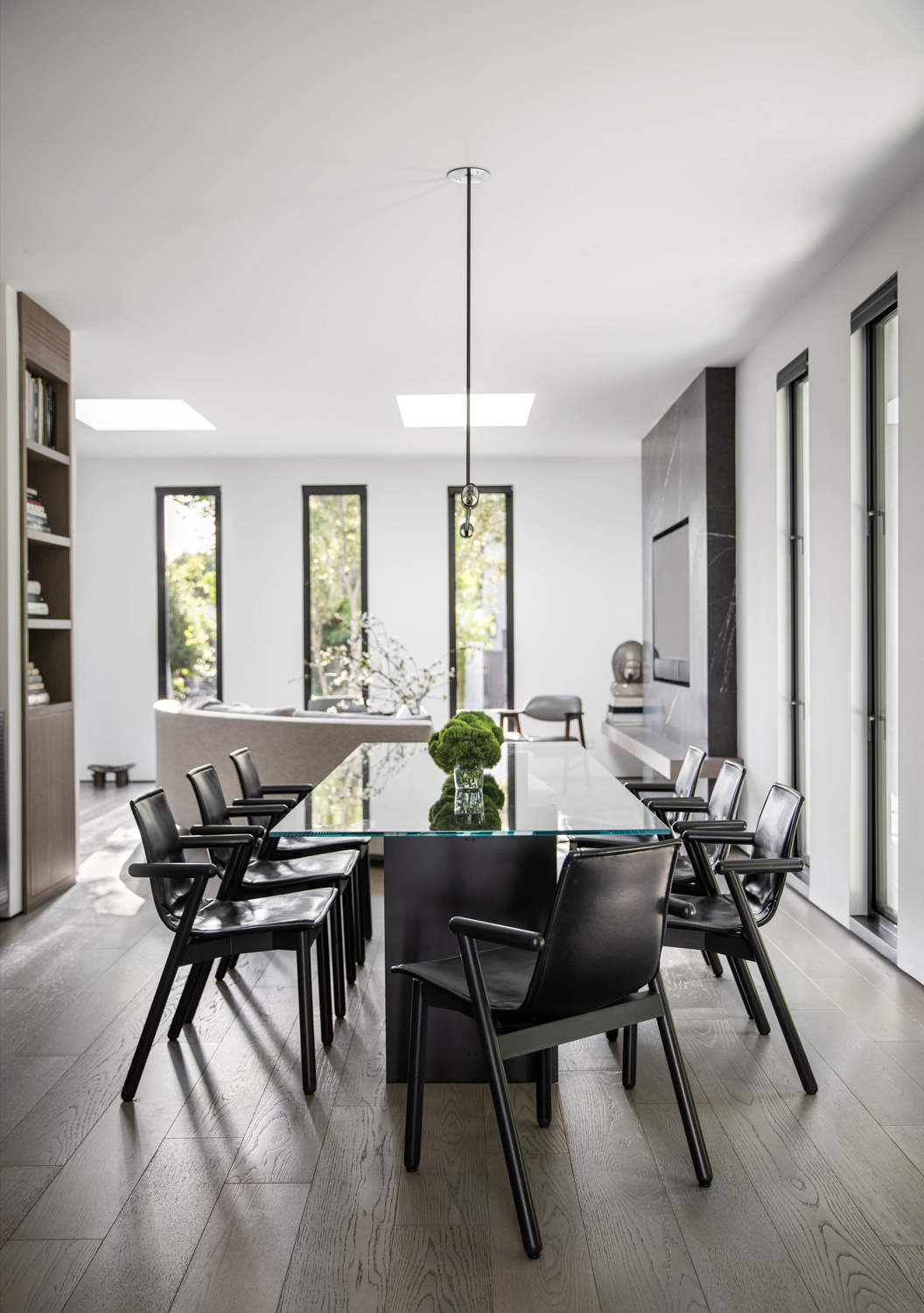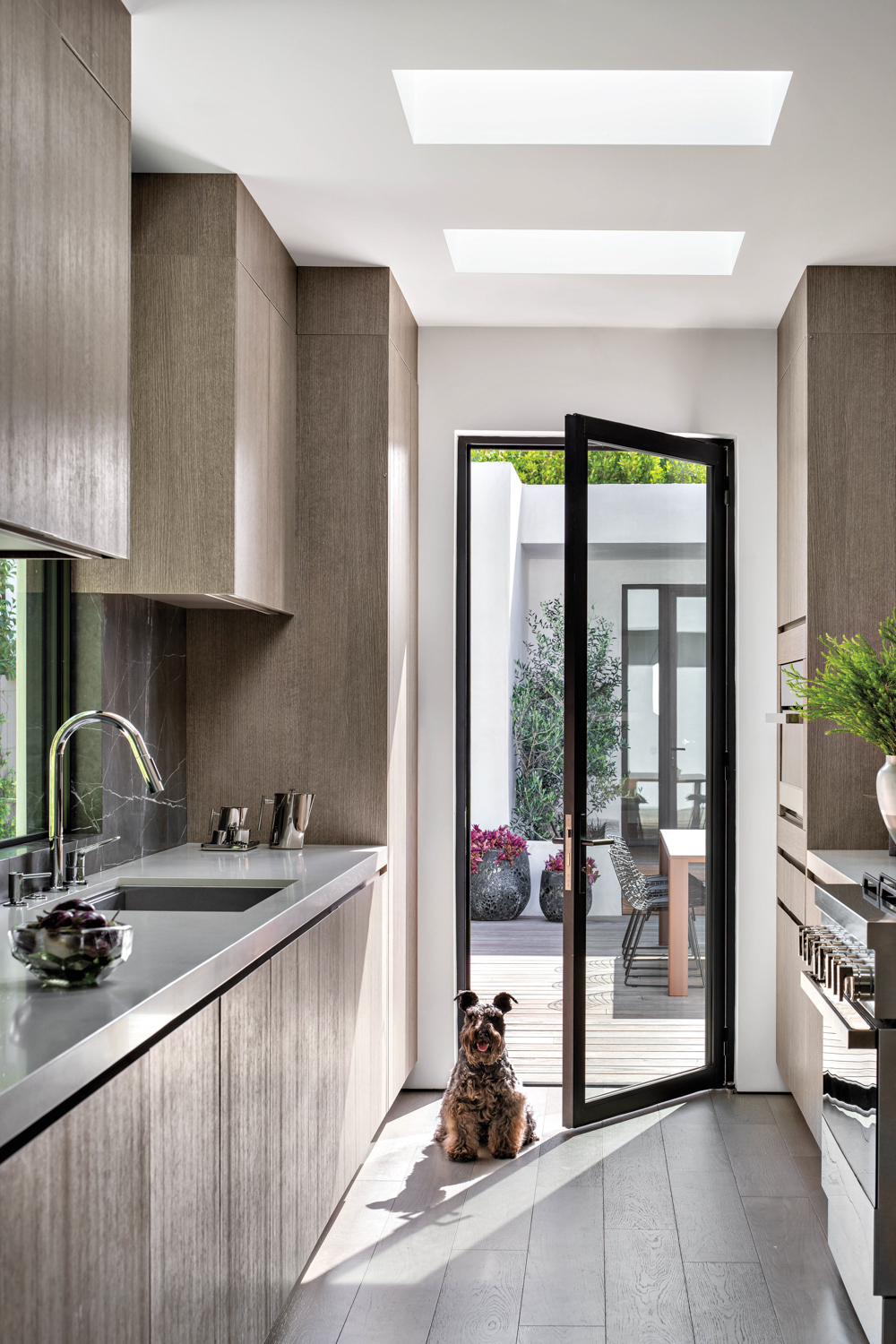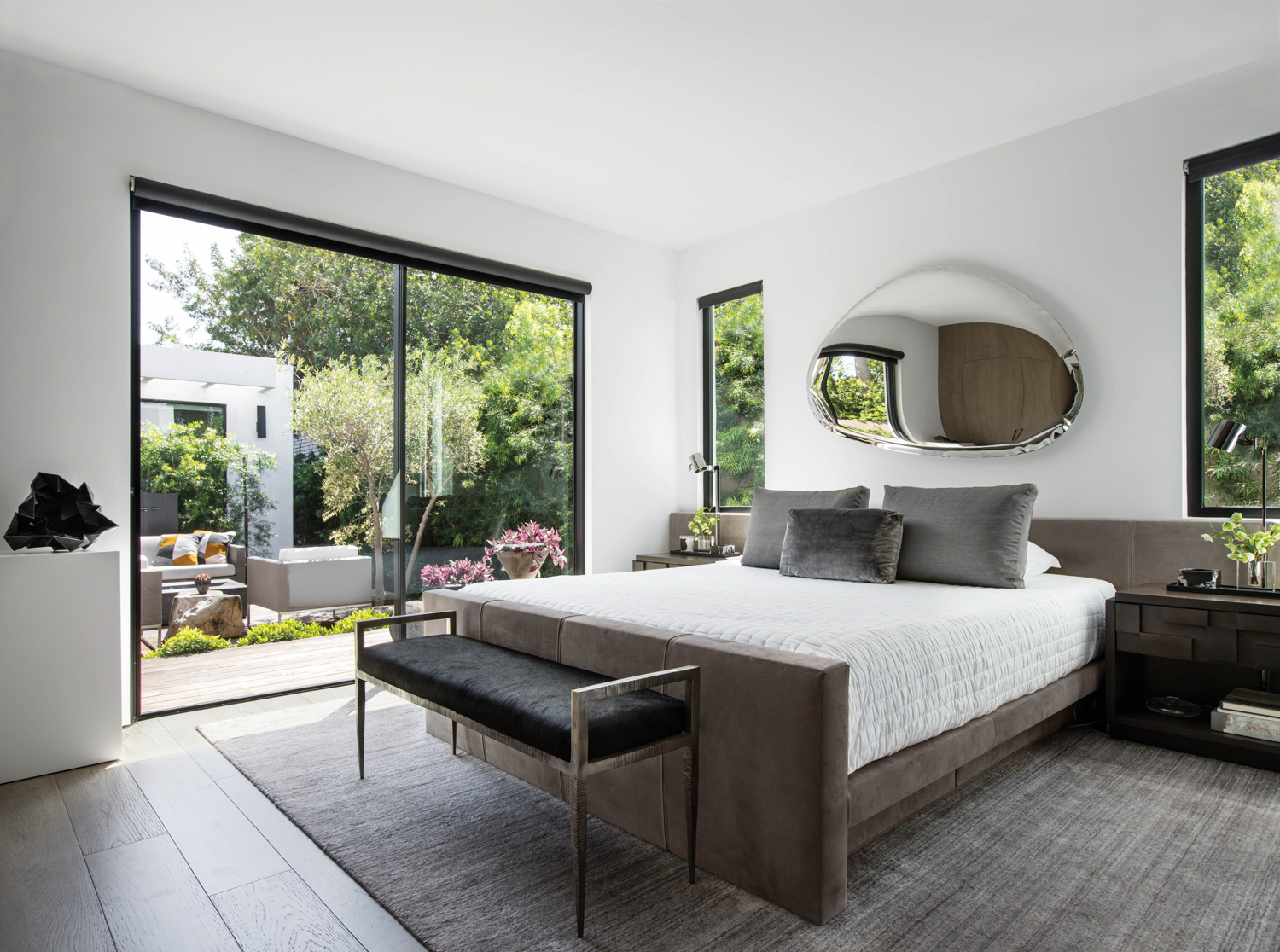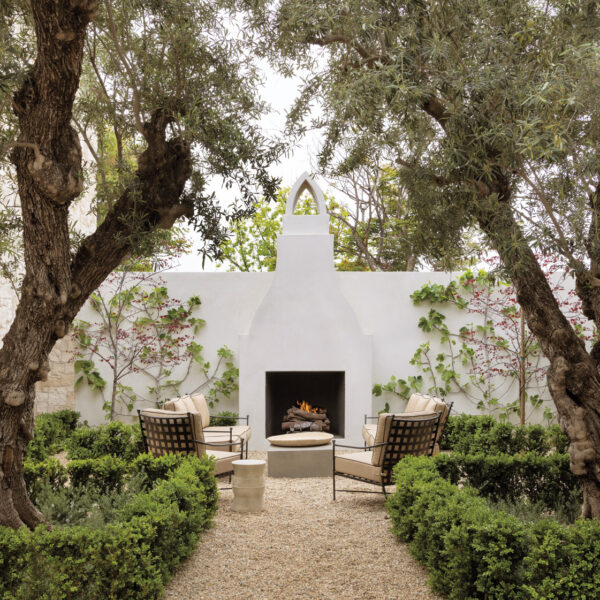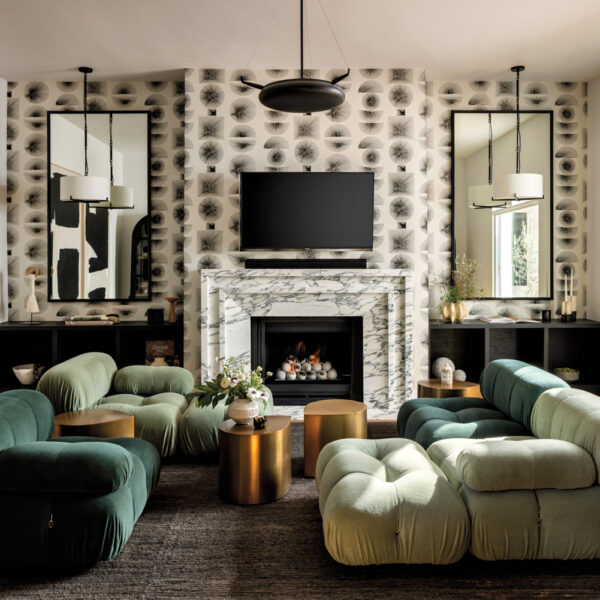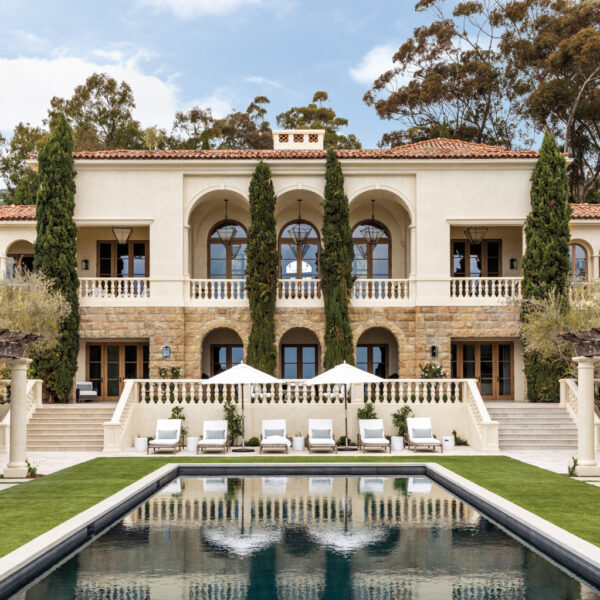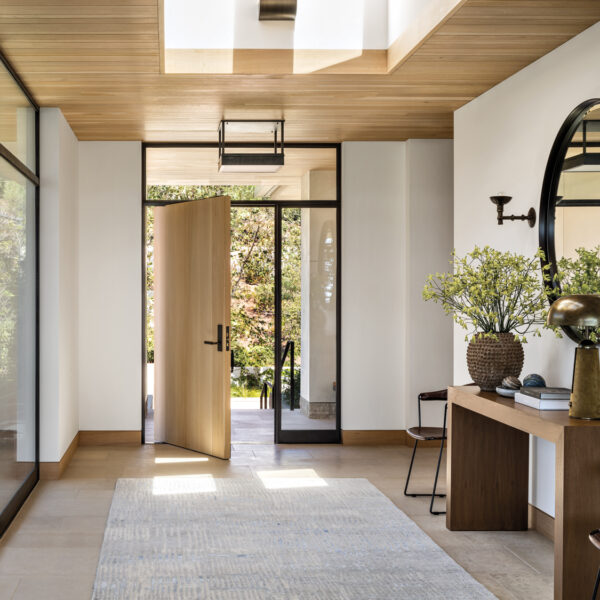Whether by training or simply inclination, interior designers are preternaturally equipped to envision what something might become. Such was the story for Jason Kalman. When he and his wife, Maureen, found a 1922 home on a beautiful street in Hancock Park, the designer saw its potential straightaway. “The listing called it ‘Spanish style,’ but it was essentially a rectangular box with terra-cotta tiles on top,” he remembers. “That made it easier for me to take away the filigree and distill it down to something really clean and crisp.”
The self-described minimalist got right to work reimagining the property (“We bought it and I was drawing the very next day,” Kalman recalls)—but he was determined not to overbuild. “Rather than maxing out the house and making it as big as possible, I wanted to retain the essence of this neighborhood developed in an era of older homes,” the designer notes. “It was a matter of thinking about what the original architect had in mind and bringing that into the 21st century with a fresh aesthetic.” Increasing the property’s functionality while keeping its single-story structure and basic footprint meant enclosing the front porch, raising the ceilings to the roofline to gain an extra foot and adding a backyard casita to serve as a guesthouse.
Kalman was also driven to do as much as possible on his own, from sketching out the renovation to devising the landscape. While well-versed in complicated, large-scale projects for his clients, designing for himself proved an invaluable and immersive experience. “At Magni Kalman Design, we’re usually working with architects and consultants—here it was fun to dive into each aspect of the process myself,” he says. “I ended up taking on nearly everything save for swinging the hammer.”
The man who did swing the hammer, general contractor Dino Rossi, proved an apt collaborator. He and Kalman routinely came up with new ideas on-site, like fabricating metal frames for the windows to align with floating walls or concealing AC vents in cabinetry to avoid dropping the ceilings to accommodate the necessary ductwork. “Jason has that eye for design and is so detail oriented and passionate,” Rossi comments.
The deck between the house and casita is a prime example of the designer’s meticulous attention. Initially, he had envisioned it as a single-level, uninterrupted experience that would play up the property’s indoor-outdoor feel. But as time passed, he decided that introducing a break with a step down into an outdoor seating area would make a greater visual impact and provide a sense of privacy between the two structures. “That’s the great thing about designing your own home,” he muses. “It’s a constant evolution.”
To bring as much natural light into the abode as possible, Kalman, who cites architects Luis Barragán and Carlo Scarpa as influences, added skylights and groupings of narrow, vertical windows along the front and sides, offering glimpses of the outside while ensuring privacy. “Instead of one big wall of glass, the slit windows create a more striking façade and great light play within the rooms,” he notes.
Throughout, the designer kept the palette achromatic, pairing white walls with rift-sawn oak cabinetry whose gray wash picks up the hue of the wood floors and paneling. “Smaller spaces feel larger when you utilize the same materials over and over in different ways,” Kalman says. The house’s scale also inspired him to match standout pieces like Paul Evans’ Stalagmite coffee table with compact, custom furnishings such as a perforated-metal sideboard he created with his father, a precision machinist, or a bespoke, elongated steel-and-glass dining table. Wherever possible, Kalman maximized every inch of the home, integrating hidden storage behind what appears to be continuous paneling or beneath a floating bed. The result is a serene flow from room to room that makes his collection of Brutalist and Brutalist-inspired pieces (See: artist Aldo Chaparro’s gold wall sculpture and a stainless-steel mirror by Zieta Studio) even more eye-catching.
“Designing for ourselves, there are so many directions we can see things go,” Kalman says, reflecting on the challenges that come with becoming your own client. But he used his own home as a blank canvas to explore new ideas and experiment with materials. “Not sacrificing design in a smaller space can be difficult,” he concludes. “But now, having lived here, it’s a really comfortable home.”

